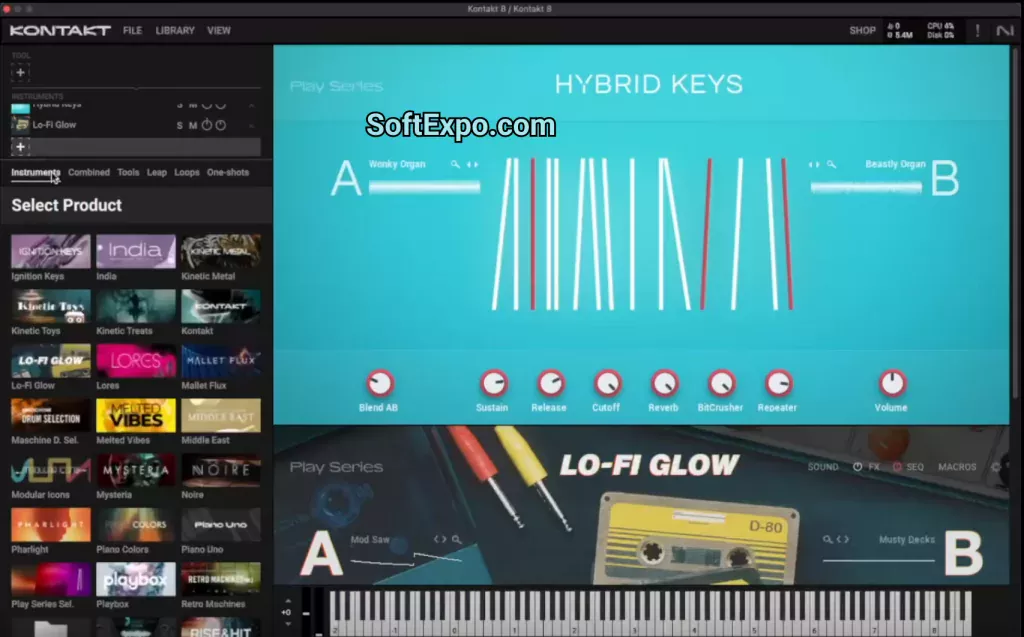All rights reserved © 2025
Some samplers feel like lab equipment; Kontakt feels like a studio you already know. It’s the platform where orchestras, pianos, drum machines, granular textures, and boutique instruments all live behind one interface, so your ideas travel quickly from sketch to score. You load a library, map a controller, stack multis, and press record — without bargaining with your tools. In the current 8.x cycle, Kontakt adds modern “intelligent” helpers while keeping the deep editing that sound designers count on: groups, zones, modulation, scripting, time-stretching, and effects routing all stay one click away.
A platform, not just a plug-in. Kontakt runs thousands of commercial instruments and countless indie libraries. You can perform with ready-made NKIs or dive into instrument editing: key/velocity zones, group FX, modulators, and KSP scripting when you need custom behavior. It’s a fast lane for composers and a deep sandbox for tinkerers.
Modern performance tools. The Neural-powered conveniences aren’t headline fluff; they cut setup time. You’ll feel speed-ups in preset browsing and project load, smarter mappings, and a cleaner first-run experience so you’re auditioning sounds sooner. Pair that with the Kontakt Player path for collaborators who just need to load your instruments without buying the full version.
Builder-grade control. Layer velocity splits, round-robins, and mic mixes; patch FX chains per group and per instrument; drop in Flex Envelopes, filters, and time-stretch; then wrap it all with KSP logic for legato, cycling, or performance UI. This duality — instant play vs. surgical control — is why Kontakt remains the default sampler for serious projects.
Predictable deployment. Teams keep a shared standalone/MSI installer and a tiny text file with checksums plus the latest version tag, so every workstation lands on the same build before a session. Release hygiene saves more deadlines than magic plug-ins ever will.

Kontakt 8 pushes the “platform” idea further with a refreshed experience and smart helpers: better in-app organization and discovery, and new creation tools that accelerate sketching patterns, phrases, and chord progressions right inside the instrument layer — useful when you’re ideating before DAW automation. For collaborators, the updated Kontakt 8 Player runs the latest instruments with streamlined controls, lowering the barrier for large teams. Before you update across bays, skim the release notes to keep everyone aligned on behavior changes.